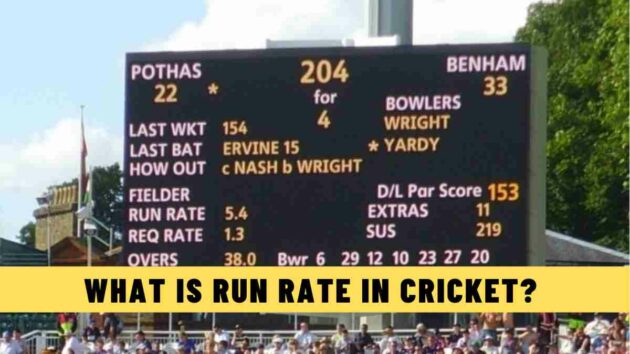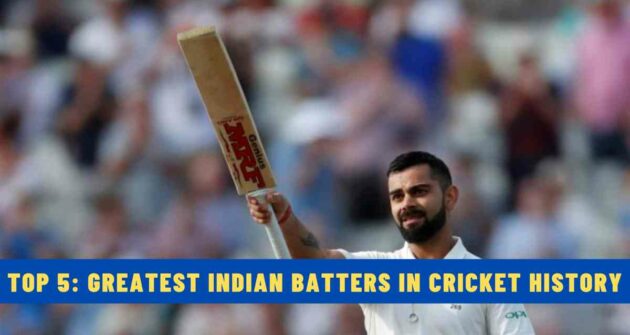While watching a cricket match, you must have seen a metric called ‘run rate’ flashing on your TV screen.
That must have left you wondering what it means and how it is calculated.
Here, we will learn about the run rate in cricket and how you can calculate it.
Run Rate in Cricket
The run rate is a simple metric that indicates the average amount of runs a team scores per over. It is also called Runs Per Over.
You see, the run rate metric helps determine how fast and slow a team scores runs in a match. And the run rate is quite important in limited-overs formats like ODIs and T20s, as teams need to maintain high-scoring rates.
So how is the run rate calculated after all? What is the formula to calculate it?
Also Read | Types of No Balls in Cricket | A Complete Guide
How to Calculate Run Rate in Cricket?
The run rate calculation is pretty simple. Fortunately, you don’t need to be a math geek!
You can determine the run rate by doing a simple division. Divide the total number of runs scored by the total number of overs faced by the batting team, and you will get your answer.
Formula to Calculate Run Rate:
Run Rate = Total Runs Scored / Total Overs Faced
You can calculate the run rate at any point during the batting team’s innings. But you need to make some alterations while feeding the ‘overs faced’ data.
See, an over consists of 6 legal deliveries, and a batting team can score as many runs as possible, including extras bowled by the bowler.
Now, each legal ball carries a value of approximately 0.167 after being divided by 6 (1/6 = 0.16, 2/6 = 0.33, 3/6 = 0.50, 4/6 = 0.66, 5/6 = 0.83, and 6/6 = 1).
So, if you want to calculate the run rate after 12.2 overs, then you can divide the runs scored at that point, say 102 runs, by 12.33 overs. This will give you 8.27 as the current run rate (RR).
[RR = 102/12.33 = 8.27]
Likewise, you can evaluate the required run rate (RRR) for the team batting second.
Suppose a team is chasing a target of 180 runs in 20 overs, and they have scored 50 runs in 5 overs so far. Now they need 130 more runs in 15 overs, their required scoring rate would be 8.66.
[RRR = 130/15 = 8.66]
Are Run Rate and Net Run Rate the Same Metrics?
The answer is no. Both metrics are different from each other and have different purposes.
The run rate helps in evaluating a team’s scoring rate in an innings. On the flip side, the net run rate comes into the picture for multi-team events, determining a team’s net run rate throughout the tournament.
Read Next | The Difference Between DLS and VJD in Cricket











